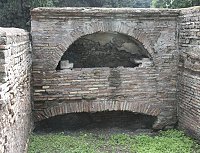
|
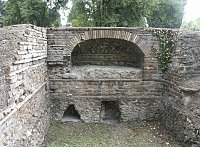
|
Arcosolium style tombsScholars date these tombs as later than the columbaria because in the Empire cremation was less popular. This architectural term comes from the Latin "arcus" for "arch" and solium for "a sarcophagus" and refers to an arched recess where the wrapped corpse was placed. |
| |
|
A columbarium with niches for the vases containing human ashes |
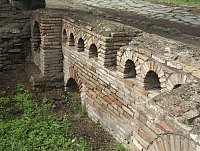
|
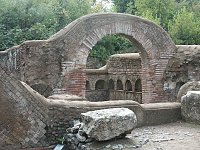
|
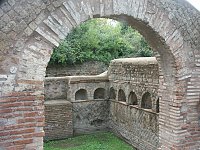
|
| |
|
The so-called Tomb of the Archetti (or Tomb of the Small Arches)This tomb dates from the first half of the first century CE. The facade has six blind arcades, framed by brick pilasters. The arch top is decorated with a brick and tufa design, with some of the original color remaining. |
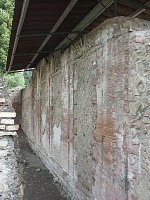
|
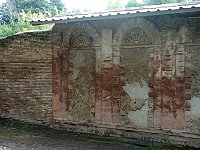
|
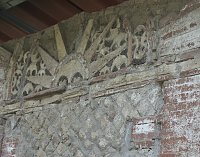
|
| |
|
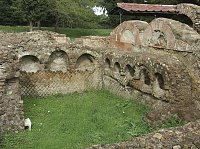
|
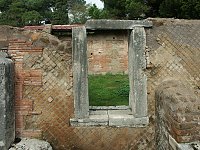
|
The so-called Tomb of the Archetti (or Tomb of the Small Arches)This tomb was obviously a columbarium. |
| |
|
Center: Tomb with remaining inscription MHN and right: lintel of tomb without an inscriptionAccording to the official guidebook, these letters form the abbreviated sentence: "H(oc) M(onumentum) H(aedes) N(on) S(equetur)= the heirs will not have this monument" (65). |

|
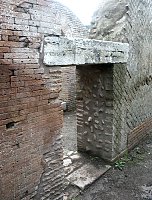
|
| |
|
The Tomb of the Colombari Gemelli, about 50 CEThe name derives from the fact that the two sides are symmetrical. (Gemelli is the Italian for "twins.") Two stairwells led upstairs. |
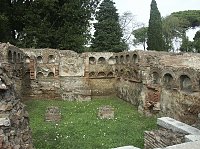
|
| |
|
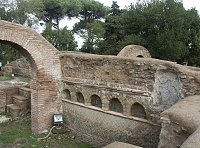
|
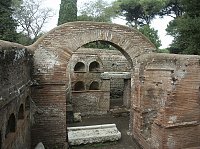
|

|


 Click here to return to index of art historical sites.
Click here to return to index of art historical sites.
 Click here to return to index of artists and architects.
Click here to return to index of artists and architects.
 Click here to return to chronological index.
Click here to return to chronological index.
 Click here to see the home page of Bluffton University.
Click here to see the home page of Bluffton University.

